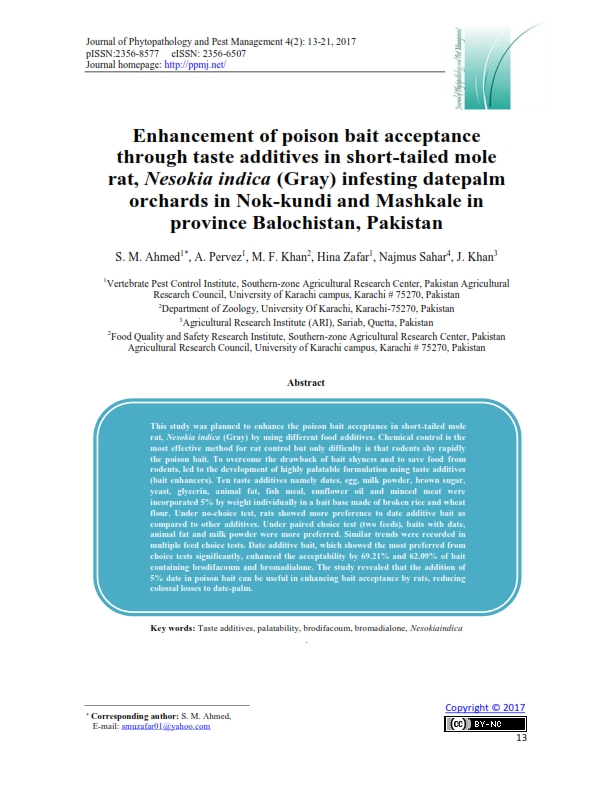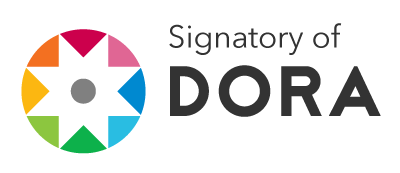Enhancement of poison bait acceptance through taste additives in short-tailed mole rat, Nesokia indica (Gray) infesting datepalm orchards in Nok-kundi and Mashkale in province Balochistan, Pakistan
Keywords:
Taste additives, palatability, brodifacoum, bromadialone, NesokiaindicaAbstract
This study was planned to enhance the poison bait acceptance in short-tailed mole rat, Nesokia indica (Gray) by using different food additives. Chemical control is the most effective method for rat control but only difficulty is that rodents shy rapidly the poison bait. To overcome the drawback of bait shyness and to save food from rodents, led to the development of highly palatable formulation using taste additives (bait enhancers). Ten taste additives namely dates, egg, milk powder, brown sugar, yeast, glycerin, animal fat, fish meal, sunflower oil and minced meat were incorporated 5% by weight individually in a bait base made of broken rice and wheat flour. Under no-choice test, rats showed more preference to date additive bait as compared to other additives. Under paired choice test (two feeds), baits with date, animal fat and milk powder were more preferred. Similar trends were recorded in multiple feed choice tests. Date additive bait, which showed the most preferred from choice tests significantly, enhanced the acceptability by 69.21% and 62.09% of bait containing brodifacoum and bromadialone. The study revealed that the addition of 5% date in poison bait can be useful in enhancing bait acceptance by rats, reducing colossal losses to date-palm.
Metrics

Published
How to Cite
Issue
Section
License
Authors who publish with Journal of Phytopathology and Disease Management agree to the following terms:
- Authors retain copyright and grant the journal right of first publication with the work simultaneously licensed under a Creative Commons Attribution License that allows others to share the work with an acknowledgement of the work's authorship and initial publication in this journal.
- Authors retain copyright and grant the journal right of first publication with the work simultaneously licensed under the Creative Commons Attribution-Non Commercial License (CC BY-NC). This allows others to share the work with an acknowledgement of the work's authorship and initial publication in this journal.
- Archives of Agricultural Sciences Journal is an Open Access Journal, and articles published are distributed under the terms of the Creative Commons Attribution-Non Commercial License (CC BY-NC). Readers may copy, distribute, and display the work for non commercial purposes with the proper citation of the original work. However, the journal retains the right to exploit subsidiary rights on behalf of the authors.
- Authors are able to enter into separate, additional contractural arrangements for the non-exclusive distribution of the journal's published version of the work (e.g. post it to an institutional repository or publish it in a book), with an acknowledgement of its initial publication in this journal.
- Authors are permitted and encouraged to post their work online (e.g., in institutional repositories or on their website) prior to and during the submission process with full disclosure to the journal, as it can lead to productive exchanges, as well as earlier and greater citation of published work. Following publication in Archives of Agricultural Sciences Journal, the author should update the repository, and include a citation and link to the published work.
Click here for more information on Licensing policy
.png)




